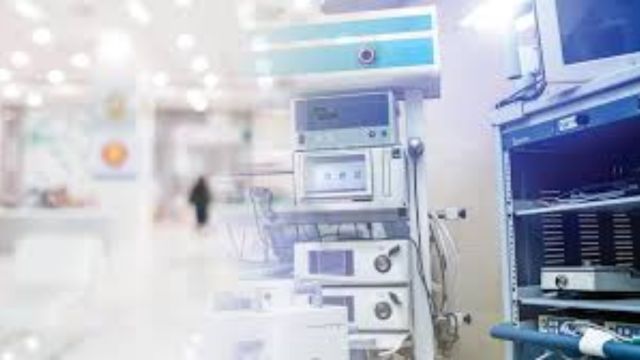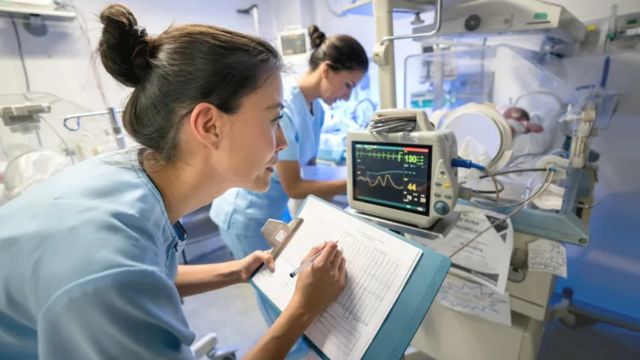Effective operation of medical equipment is absolutely vital for patient survival in critical care units. The nature of critical care calls for constant observation, exact diagnosis, and quick response. Still, equipment breakdowns can seriously compromise patient safety and treatment effectiveness. Here is where clinical engineering is quite important to guarantee optimal operation of medical equipment. Specialised experts bridging the gap between healthcare and technology, clinical engineers make sure medical equipment satisfies the best criteria of safety, dependability, and performance.
We shall discuss in this paper how clinical engineering improves patient safety and helps to lower medical equipment failures in critical care units.
1. Proactive Maintenance and Preventive Measures
Implementing a strong preventive maintenance (PM) program is one of clinical engineers’ key obligations. Modern tools include ventilators, infusion pumps, and patient monitoring systems are mostly dependent upon in critical care units. Usually saving lives, these devices must always be in perfect operating order.
Regular inspections, calibrations, and maintenance of these devices by clinical engineers help to prevent malfunctions before they start Clinical engineers reduce the possibility of equipment breakdown by doing regular maintenance including wear and tear check-through, correct calibration assurance, and software upgrading. By helping medical devices run at their optimum, this proactive approach lowers the possibility of mistakes endangering patient care.
2. Ensuring Compliance with Regulatory Standards
Critical care environments’ medical equipment has to follow strict regulatory guidelines established by groups as the FDA (Food and Drug Administration), ISO (International Organisation for Standardising), and IEC (International Electrotechnical Commission). Making sure all medical equipment follows these guidelines falls to clinical engineers.
Clinical engineers help to prevent equipment problems resulting from non-compliance by keeping current with the newest standards and regulations. In critical care settings, non-compliant equipment could generate medical errors or safety concerns that could have major effects. To guarantee optimal operation and patient safety, clinical engineers make sure that all device is routinely checked and satisfies legal criteria.
You may also like this: Integrating Clinical Engineering with Hospital IT Systems: Benefits and Challenges
3. Rapid Troubleshooting and Problem Resolution

Should an equipment breakdown in a critical care unit, time is of the utmost importance. Quickly troubleshooting and fixing problems depend much on clinical engineers. They are taught to spot malfunctioning components, diagnose difficult problems, and apply fixes to quickly restore equipment capability.
Any delay in fixing or replacing broken equipment in critical care units might be fatal. Working under pressure, clinical engineers react quickly to equipment malfunctions and make sure the medical staff has dependable tools at hand for patient treatment. Their quick response and technical knowledge help much to reduce dangers to patients and minimise prolonged downtime.
4. Training Healthcare Providers on Equipment Use
Staff training is also another important contribution of clinical engineering in critical care. Working collaboratively with doctors and nurses among other healthcare experts, clinical engineers provide instruction on the correct operation, handling, and maintenance of medical devices. This training guarantees that staff members not only know how to operate machinery but also aware of the problems that might develop during its running.
Medical device improper use can lead to equipment breakdown, mistakes, or mishaps. By making sure healthcare personnel are knowledgeable in the correct techniques for handling and maintaining equipment, clinical engineers lower these hazards and therefore improve the general patient safety as well as equipment dependability.
5. Data Collection and Performance Monitoring
Furthermore emphasised by clinical engineers is the ongoing data collecting and analysis-based monitoring of device performance. Many modern medical equipment feature sensors that can offer real-time data on their operation. Clinical engineers track equipment conditions using this data and spot any early indicators of possible breakdowns.
Through performance trend analysis and historical data, clinical engineers may forecast when a device could require replacement or maintenance. This data-driven strategy enables more effective use of resources, improved planning, and timely interventions to stop problems before they impact patient care.
6. Collaboration with Manufacturers for Device Improvements
Clinical engineers often work directly with medical device manufacturers to provide feedback and suggest improvements. When equipment issues arise, engineers help identify the root cause of the problem, whether it’s a design flaw, software issue, or mechanical malfunction. By sharing this feedback with manufacturers, clinical engineers contribute to the continuous improvement of medical devices.
In some cases, manufacturers may issue recalls or software updates based on clinical engineers’ findings. This collaboration ensures that the devices used in critical care units remain reliable and effective over time.
You may also like this: How Clinical Engineering Reduces Medical Errors and Enhances Patient Safety
Conclusion
Especially in critical care environments, clinical engineering is essential component of healthcare systems. One cannot overstate the part clinical engineers play in lowering medical equipment failures. By means of proactive maintenance, regulatory compliance, fast troubleshooting, staff training, performance monitoring, and manufacturer collaboration, clinical engineers help to guarantee that medical equipment are always ready to provide ideal treatment.
Directly improving patient outcomes, clinical engineering experts provide the required knowledge in critical care units, where every second counts, to preserve the dependability and safety of medical equipment. Their contributions finally help the healthcare system to be life-saving, so they are absolutely essential in contemporary medical treatment.
At J&J Supplies, we are aware of the vital need of dependable medical equipment in environments of treatment. Remain current with the most recent developments in medical supply and clinical engineering including best practices. To directly get professional thoughts, updates on legislative developments, and more—straight to your email—register for our newsletter today! J&J Supplies will help you stay ahead.








